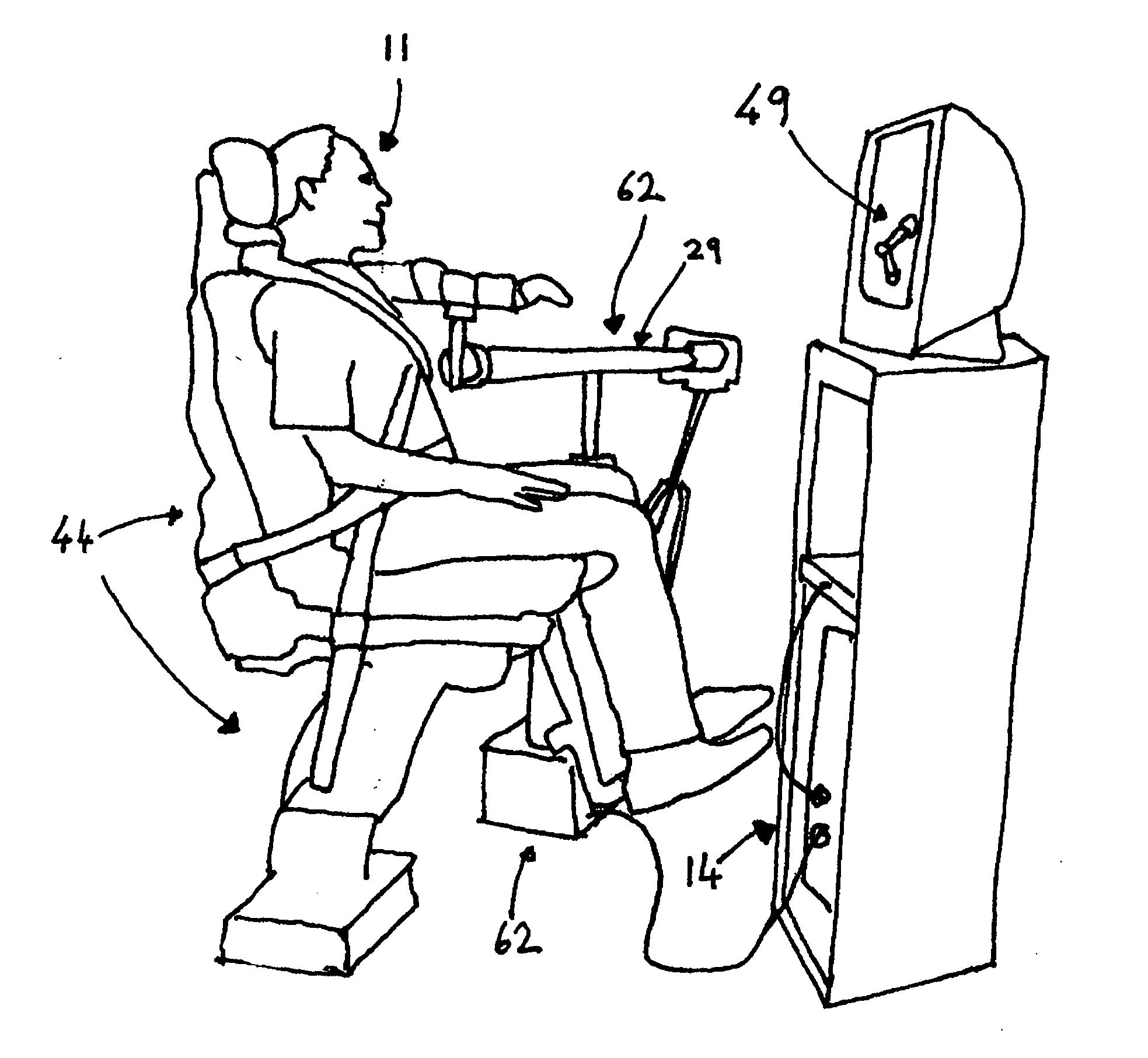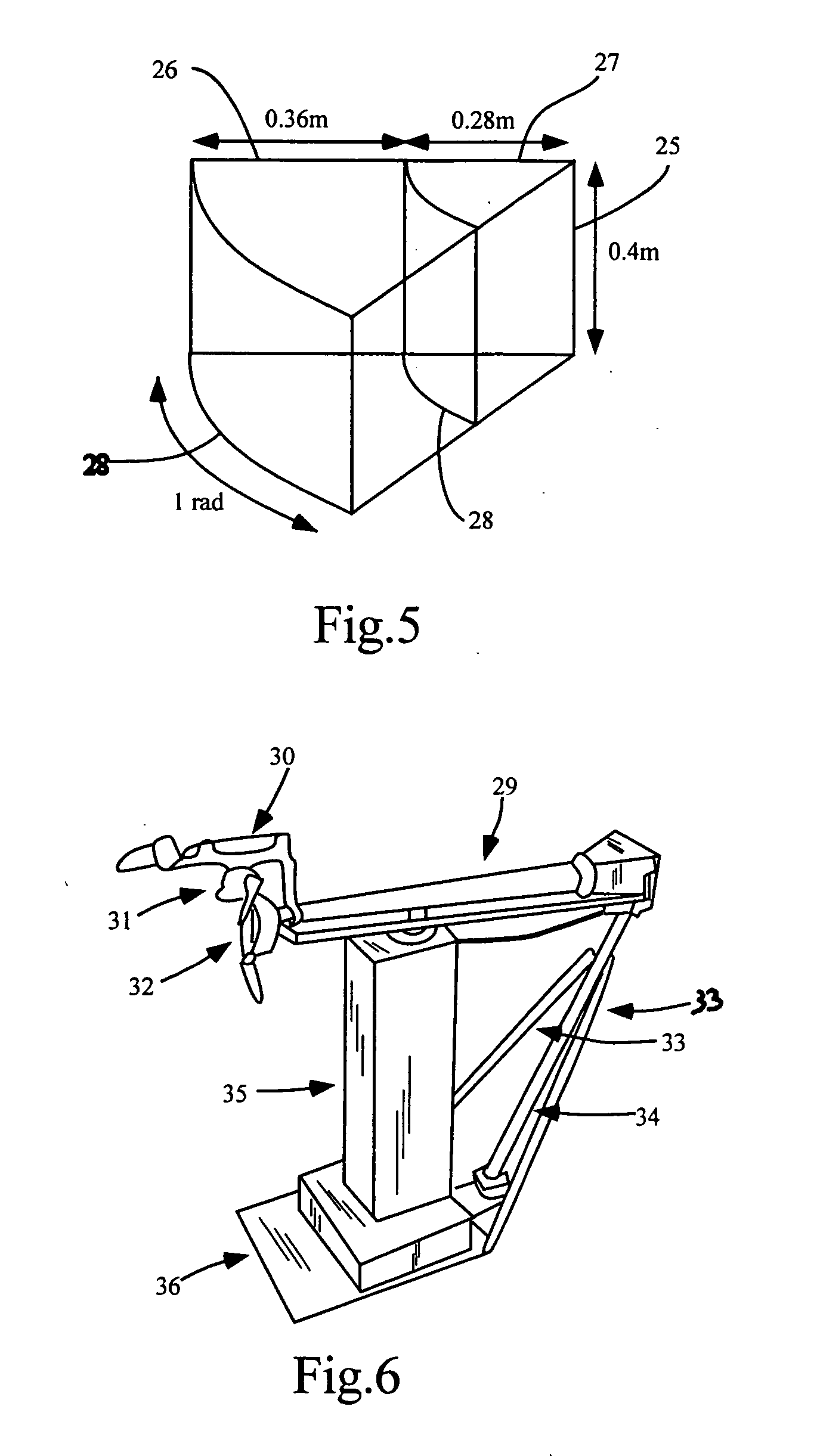System and methods to overcome gravity-induced dysfunction in extremity paresis
a technology of extremity and gravity, applied in the field of rehabilitation and/or physical therapy, can solve problems such as loss of independent joint control in the body or parts
- Summary
- Abstract
- Description
- Claims
- Application Information
AI Technical Summary
Benefits of technology
Problems solved by technology
Method used
Image
Examples
examples
[0215] The invention will be more readily understood by reference to the following examples, which are included merely for purposes of illustration of certain aspects and embodiments of the present invention and not as limitations.
example i
Modification of the HAPTICMASTER to Meet Required Specifications
[0216] The required needs for stroke subjects fall well within the performance criteria of the current version of the HAPTICMASTER. Its peak force ability of 250 N is considerably greater then the maximum adduction forces measured in our strongest stroke subjects (Dewald and Beer (2001a) Muscle Nerve 24: 273-283). The position resolution of the HAPTICMASTER device was approximately 4-14 μm. This was more than sufficient for the kinematic measurements needed for the real time visual display (see also rehabilitation software development). The maximum deceleration (50 m / s2) and simulated stiffness (50,000 N / m) were also more than sufficient for the mechanical environments we intend to simulate. The only performance criteria that was adjusted was the maximum velocity of the robot which was originally 1.4 m / s, less than the needed 2.25 m / s to accommodate the peak tangential velocities seen at the forearm and upper arm durin...
example ii
Impairment Quantification
[0217] Reaching in a plane was explored using the system while concurrently measuring shoulder / elbow / wrist and finger forces and torques. This allowed back calculation of shoulder and elbow torques as well as wrist and finger forces / torques, which is a highly relevant output measure of the system. The system also allowed for the monitoring of higher speed movements during which subjects were able to perform ballistic reaches in several conditions: fully supported by a rigid plane passing though the center of rotation of the shoulder, and with various levels of support that virtually reduce or enhance gravity. Subjects were asked to move to a variety of targets within a plane that passes through the center of rotation of the shoulder. These targets encompass both reach and retrieval directions, and the plane can be horizontal, inclined or declined. In this way, the ACT3D system can characterize fast point to point movements in several aspects of the total wo...
PUM
 Login to View More
Login to View More Abstract
Description
Claims
Application Information
 Login to View More
Login to View More - R&D
- Intellectual Property
- Life Sciences
- Materials
- Tech Scout
- Unparalleled Data Quality
- Higher Quality Content
- 60% Fewer Hallucinations
Browse by: Latest US Patents, China's latest patents, Technical Efficacy Thesaurus, Application Domain, Technology Topic, Popular Technical Reports.
© 2025 PatSnap. All rights reserved.Legal|Privacy policy|Modern Slavery Act Transparency Statement|Sitemap|About US| Contact US: help@patsnap.com



